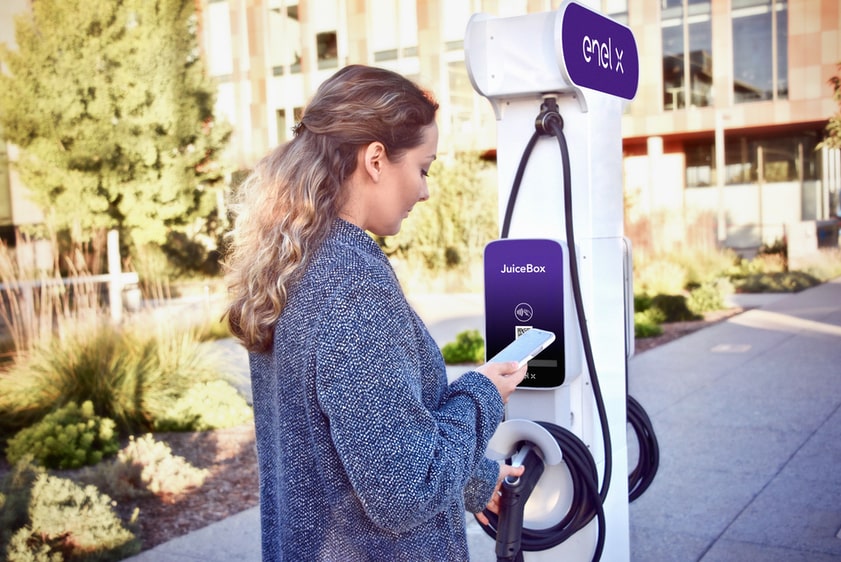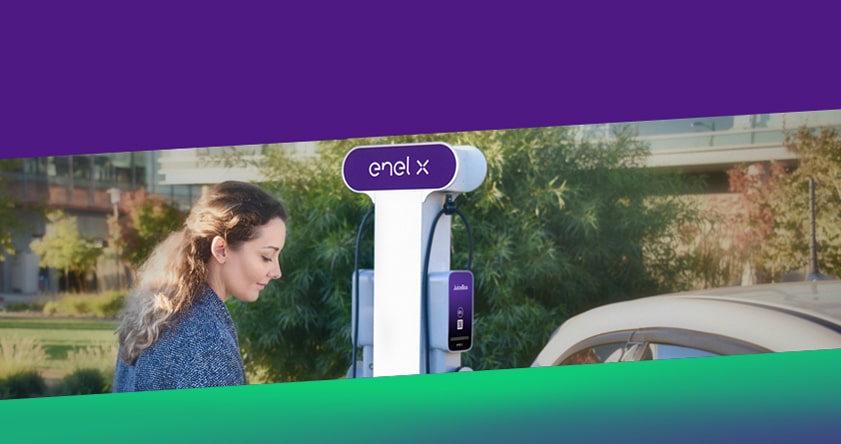Breaking the Barriers to EV Adoption: What Your Business Can Do to Help

Plug-in electric cars like the Nissan Leaf and Chevy Volt arrived on US roads nearly a decade ago. From the moment they arrived, the call went out for businesses to get behind electric vehicles. That made a ton of sense. Employers have many compelling dollars-and-cents business reasons to offer EV charging to their workers and customers: employee retention, reducing your carbon footprint, and green marketing cred. But that’s not what this article is about. There’s a higher calling for business decision-makers to play a role in accelerating EV adoption.
Climate change is arguably the defining existential challenge of the 21st century. And transportation is the source of about one-third of those greenhouse gas emissions. Replacing combustion-engine vehicles with zero-emission cars is a big part of the remedy. Tailpipe pollutants also have a major and immediate impact on local air quality. Emissions from cars and trucks are a lethal cocktail carbon monoxide, nitrogen oxides, particulate matter, and other pollutants that pose a significant health risk at every stage of life. The emissions are attributed to many thousands of premature deaths every year.
According to the Union of Concerned Scientists and other organizations, people in low-income communities and communities of color are disproportionately exposed to higher levels of air pollution from cars, SUVs, and trucks. Once again, battery-powered vehicles that provide clean energy are an essential part of the solution—along with improved urban design, public transit, telecommuting, bike commuting, and shared transportation.
So, how exactly does your business play a role in an electric-vehicle future? Let us count the ways. Companies, from mom-and-pop businesses to mega-corporations, can knock down many of the biggest obstacles holding back widespread EV adoption.
Obstacle #1: Multi-family dwellings have limited access to EV charging.
Eighty-percent or more of electric-car charging takes place at home. When an EV owner pulls into their driveway or garage, they reach for a plug and connect it to their electric car. The whole process takes about 10 seconds. A typical day’s worth of driving range is restored to the battery in a couple of hours.
Here’s the challenge: About one-quarter of Americans live in a multi-family condo or apartment buildings. Not having a dedicated personal spot to recharge battery electric vehicles can be challenging for some drivers. The situation is getting remedied by new laws requiring builders to install EV charging and deployment of local fast-charge plazas—at shopping centers, parking garages, and even gas stations.
However, other than your home, the most convenient location to charge an EV is where it’s already parked for a big chunk of the day: at work. A business only needs to install a few EV charging stations to serve its EV-driving workforce. Protocols for rotating cars or otherwise ensuring that every vehicle can get charged during the day are easy to establish. When gas-car-driving employees—those who live in multi-family dwellings—see EVs charging in the parking lot, their hesitation about buying an electric vehicle dissipates. Workers start chatting about the benefits of an electric car. And with each new EV charging in the employee parking lot, a business looks greener and cleaner.
Consumers who drive electric vehicles tend to be more educated and tech-savvy than the average buyer—precisely the kind of workers that businesses want to retain. But the real reason for installing charging stations (ideally available as a free perk) is to knock down those obstacles to EV adoption and cleaner air.
Obstacle #2: Drivers of EVs and plug-in hybrids still have range anxiety.
Today’s electric vehicles commonly have more than 200 miles of driving range. The latest Tesla Model S has more than 400 miles of range. That’s way more range than drivers commonly use. Nonetheless, people thinking about buying an EV sometimes delay the decision out of a vague notion that an electric car’s battery doesn’t store enough energy or that charging infrastructure is not sufficient.
A bank of charging stations for your employees or customers can dispel those myths. Whether workers have a home-charging station or not, knowing that you can plug in at work provides another level of reassurance. Every hour plugged into a capable charging station, like the JuiceBox 40 or JuiceBox 48, can add 25 to 30 miles of range for the trip back home at the end of the day.
Workplace charging is even more vital for plug-in hybrids, which use electricity for the first set of miles before reverting to gasoline. Plug-in hybrid commonly has been about 20 and 40 miles of all-electric range. By offering a charge at work, employers can help ensure that plug-in hybrid drivers get home purely on electricity.
After those plug-in hybrid owners realize the convenience of charging at home and work—and range anxiety vanishes—their next purchase will likely be a pure EV. One more obstacle knocked down.
Obstacle #3: Consumers lack awareness of how great EVs are to drive.
A decade after EV sales took off in the US, many consumers hold back strictly based on a lack of familiarity. Several electric vehicles were featured in blockbuster Super Bowl television commercials last year. While bid-dollar marketing campaigns promote individual models, consumers might still have questions about price, charging, and range.
There’s no better way to get questions answered than a face-to-face conversation—especially with a trusted co-worker. By installing EV charging at a workplace, employees who still drive gas cars see colleagues driving and charging every day. By installing charging, a business facilitates that daily sight of EV ownership as practical, fun, and a smart, economic decision.
The charging stations in your parking lot become an info resource. When a worker becomes an in-market car shopper, he or she knows exactly where to get answers about life with an EV. Obstacles begin to drop. When a purchase is made, suddenly one more electric vehicle starts plugging in with the new EV owner becoming a resource for others considering the switch. There’s no need for a formal info session. Your business becomes a virtuous cycle of EV adoption.
Obstacle #4: Consumers still see EVs as expensive, but free fuel changes the economics.
One of the biggest myths about electric vehicles is that they’re too expensive. Most calculations about EV prices fail to consider high resale values and low cost of ownership, especially the cheap electricity that fuels an electric vehicle. The purchase price of a long-range EV starts as low as $30,000 before incentives that can reduce the cost by thousands of dollars.
There’s a magic word to counteract the misperception: Free.
Businesses provide all kinds of small perks to employees and customers—from installing (and powering) big-screen televisions to gym memberships and healthy snacks. The cost of providing free charging is often lower than those benefits. Also, consider that federal, state, and local entities offer EV rebates that can fully cover the cost of charging stations and installation.
The return on investment quickly gets paid back in employee retention, achieving sustainability goals, and goodwill with customers. More than that, business leaders will have the immeasurable satisfaction of knowing that they knocked down the obstacles to a clean-vehicle future.
To find out what it costs to install and manage a charging station for your business check out our commercial charging solutions.



